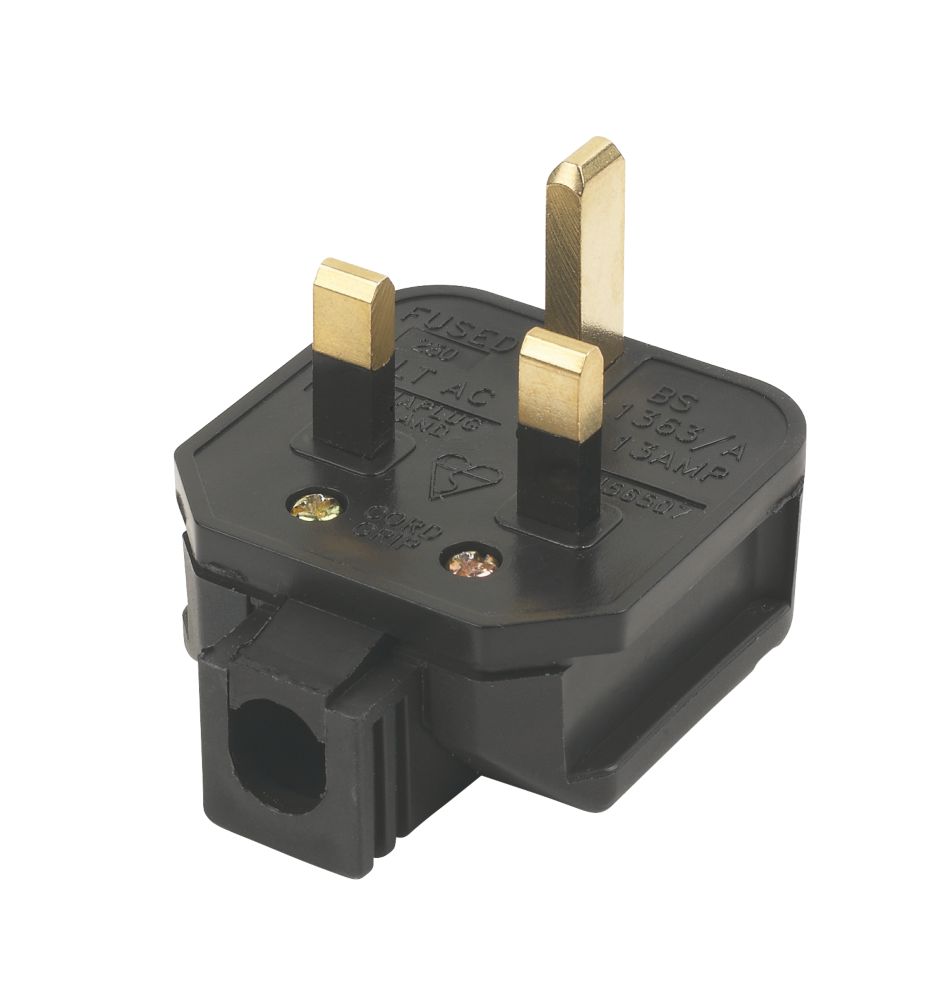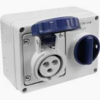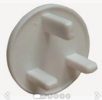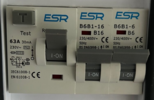How could any of that possibly result in a plug overheating?"Van" rings alarm bells, where is the 230 volt coming from? Many heaters use diodes to reduce the output by half, or use some wave form clipping, if supplied from a simulated sine wave this may be messed up,
You are using an out of date browser. It may not display this or other websites correctly.
You should upgrade or use an alternative browser.
You should upgrade or use an alternative browser.
13 amp plug overheating
- Thread starter johnbuckley
- Start date
- Joined
- 18 Nov 2003
- Messages
- 111
- Reaction score
- 6
- Country

Yes that's the one, must admit when I saw it I couldn't see too much that would make it 'heavy duty', any recommendations for a more substantial plug, once we get to the bottom of this I'd prefer to have something that is genuinely heavy duty.If this is the Screwfix heavy duty plug you are using then apart from the plastic casing which does look a little more robust than a standard whit plug I wouldn't think it is particularly heavy duty. I think you need to look for something a bit heftier on the connection side of things including the prongs.

13A Fused Heavy Duty Plug Black - Screwfix
Order online at Screwfix.com. Durable and hardwearing. FREE next day delivery available, free collection in 1 minute.www.screwfix.com
The weak point of a lot of plugs is them cracking and falling apart when they're hit against various surfaces, this is normally the bit they're mitigating or referring to when they say "heavy duty"Yes that's the one, must admit when I saw it I couldn't see too much that would make it 'heavy duty', any recommendations for a more substantial plug, once we get to the bottom of this I'd prefer to have something that is genuinely heavy duty.
- Joined
- 18 Nov 2003
- Messages
- 111
- Reaction score
- 6
- Country

Unfortunately I'm not local at the moment and my daughter is abroad until Thursday. I'll get her to take a photo and I'll post it for reference. When replacing the plug I did ensure to terminate securely and also check that the fuse was a tight fit as my first thoughts were dodgy connections on the previous plug.Post a photo of the plug, with the top cover removed, so we can see the terminations. A weak point of 13amp plugs, is the fuse, and how the fuse makes contact in the plug. You need to ensure it is tightly held, to minimise resistance heating.
- Joined
- 27 Jan 2008
- Messages
- 27,426
- Reaction score
- 3,314
- Location
- Llanfair Caereinion, Nr Welshpool
- Country

Does not matter, as supplied from the clients home, although that seems odd, I know I don't have a 16 amp supplyHow could any of that possibly result in a plug overheating?
 on a TT earthing system suitable to supply a caravan type vehicle, that is only likely to be found on farms and the like. This is why I had assumed using an inverter may have been the problem.
on a TT earthing system suitable to supply a caravan type vehicle, that is only likely to be found on farms and the like. This is why I had assumed using an inverter may have been the problem.I was thinking that the simulated sine wave was causing the unit to draw too much current, but now we know not an inverter that is clearly not the problem.
The plug should be mat black as that colour can radiate heat better, but the problem is removing the heat from the fuse for a prolonged time, the 13 amp plug and socket was developed near end of second world war, but it has been modified, the solid brass pins have been replaced with safety pins, with reduced cross sectional area where the insulation has been added. It depends on a good grip in the socket so some heat can be got rid of through the pins, so all it needs is for a socket to be strained by some one inserting a non BS 1363 item like this
 and the socket can be strained so no longer able to dissipate the heat.
and the socket can be strained so no longer able to dissipate the heat.Ups I missed this
so possible the fault is the customers socket not the 13 amp plug. I had looked at thisthis terminates with a 13 amp 'heavy duty 3 pin plug which is plugged into the customers home
 and had assumed plugged into a 16 amp supply. For EV cars when using a granny supply it is limited to 2 kW they do not attempt to draw 3 kW from a 13 amp socket, I would say the problem is simply drawing too much current for too long. One should not draw more than 2 kW from a ring final without being sure
and had assumed plugged into a 16 amp supply. For EV cars when using a granny supply it is limited to 2 kW they do not attempt to draw 3 kW from a 13 amp socket, I would say the problem is simply drawing too much current for too long. One should not draw more than 2 kW from a ring final without being sure
Since you have no idea what else is being supplied from the ring final, the only option is either use a generator or use less than 2 kW.The load current in any part of the circuit should be unlikely to exceed for long periods the current-carrying capacity of the cable (Regulation 433.1.5 refers). This can generally be achieved by:
(i) locating socket-outlets to provide reasonable sharing of the load around the ring
(ii) not supplying immersion heaters, comprehensive electric space heating or loads of a similar profile frog the ring circuit
(iii) connecting cookers, ovens and hobs with a rated power exceeding 2 kW on their own dedicated radial circuit
(iv) taking account of the total floor area being served. (Historically, limit of 100 m² has been adopted.)
I believe that MK toughplugs may have a better quality fuse-grip inside. Coupled with the captive wrap-around terminals, they might not get as warm in use?
https://cpc.farnell.com/mk/655red/mk-toughplug-red/dp/PL00742 data sheet https://www.farnell.com/datasheets/3698281.pdf showing the insides.
I'd really not think the plug colour would make significant difference to the heat 'radiated' from a warm fuse inside the housing. Most heat loss will be via conduction into the copper parts, surely?
https://cpc.farnell.com/mk/655red/mk-toughplug-red/dp/PL00742 data sheet https://www.farnell.com/datasheets/3698281.pdf showing the insides.
I'd really not think the plug colour would make significant difference to the heat 'radiated' from a warm fuse inside the housing. Most heat loss will be via conduction into the copper parts, surely?
We knew that from the very start, since the OP said "...'heavy duty 3 pin plug which is plugged into the customers home...", so that your incorrect thinking probably only served to introduce confusionI was thinking that the simulated sine wave was causing the unit to draw too much current, but now we know not an inverter that is clearly not the problem.
Is it happening at more than one customers home.The 240 volt comes from the supply of a clients house. Not sure about the rest of your info as that lost me a bit; the heater is portable with its own 13 amp plug which is plugged into a normal 3 pin socket inside the van. Really it's a glorified hair drier.
- Joined
- 18 Nov 2003
- Messages
- 111
- Reaction score
- 6
- Country

Yes it's random, and there's around 25 customers per weekIs it happening at more than one customers home.
Since you have no idea what else is being supplied from the ring final, the only option is either use a generator or use less than 2 kW.
Whilst the not knowing may be true, in most cases the load on the ring will be negligible, so no reason for it not to be happy supplying up to 3Kw via a 13amp socket, even as a continuous load.. Assuming both plug, and socket are of decent quality, and both have been well terminated - which is why I invited a photo of the overheated plug.
Having said that, I would be wary of having an appliance plugged regularly into a ring, which drew 3Kw, obviously less so about 2.4Kw - which is what our washer draws and in powered from a 13amp socket.
- Joined
- 11 Jan 2004
- Messages
- 45,848
- Reaction score
- 3,514
- Country

Has this issue been apparent since day one?
- Joined
- 11 Jan 2004
- Messages
- 45,848
- Reaction score
- 3,514
- Country

The WM would not draw 2.4 k's constantly though, which is why a clamp meter test would be very helpful.Having said that, I would be wary of having an appliance plugged regularly into a ring, which drew 3Kw, obviously less so about 2.4Kw - which is what our washer draws and in powered from a 13amp socket.
- Joined
- 18 Nov 2003
- Messages
- 111
- Reaction score
- 6
- Country

Yes although it seems to take some time for the fuse to blow and so the burning wasn't seen by me initially. To be fair my daughter didn't tell me straight away and just kept changing the fuse!Has this issue been apparent since day one?
- Joined
- 18 Nov 2003
- Messages
- 111
- Reaction score
- 6
- Country

Certainly going to do the lamp test a.s.a.p, at least that would be something to go on.The WM would not draw 2.4 k's constantly though, which is why a clamp meter test would be very helpful.
- Joined
- 11 Jan 2004
- Messages
- 45,848
- Reaction score
- 3,514
- Country

Are the fuses she is using as replacements a good quality brand, IE not cheap imports?
DIYnot Local
Staff member
If you need to find a tradesperson to get your job done, please try our local search below, or if you are doing it yourself you can find suppliers local to you.
Select the supplier or trade you require, enter your location to begin your search.
Please select a service and enter a location to continue...
Are you a trade or supplier? You can create your listing free at DIYnot Local
